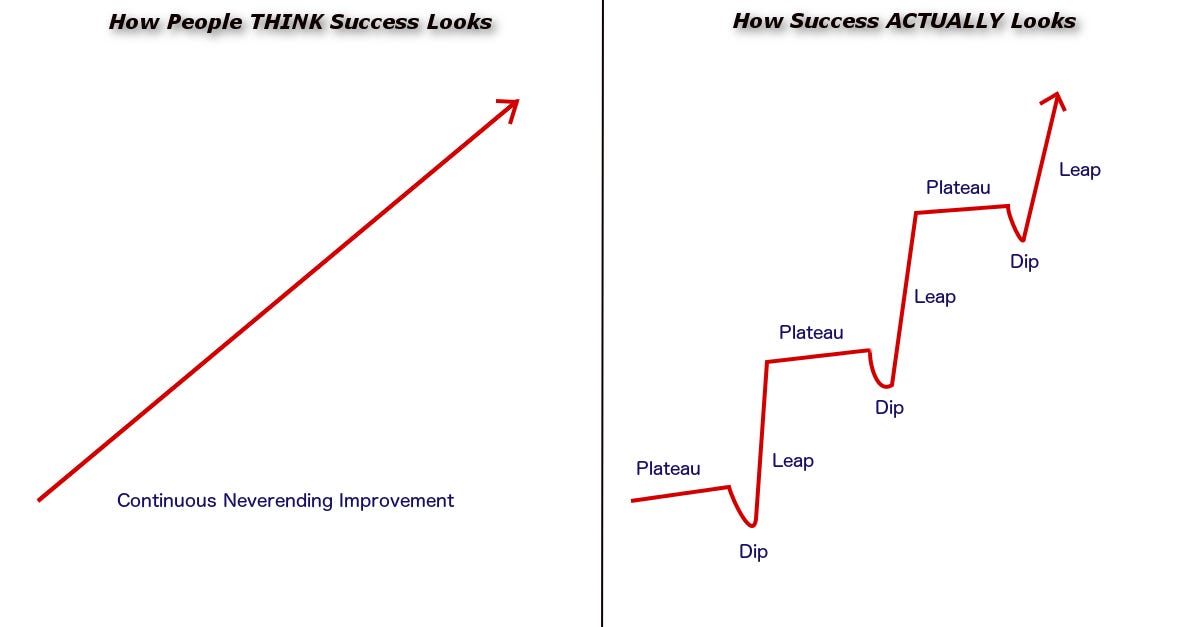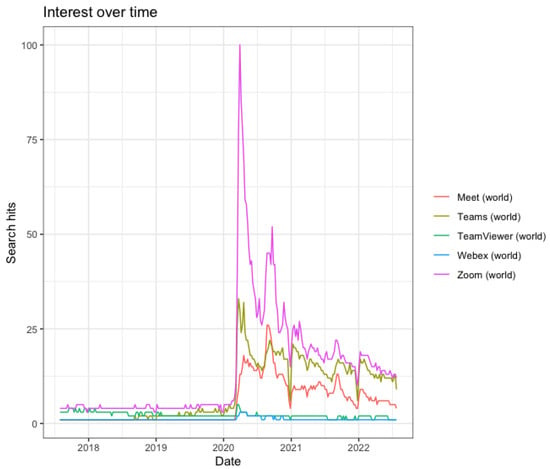The Hidden Skill Behind Every Great SaaS Company: Knowing When to Switch Gears
Growth isn’t about speed. It’s about knowing when to go wide — and when to go deep.
If you’ve ever wondered, “Should we push harder on growth — or slow down and fix the engine?” you’re asking the right question.
Most founders think of growth as a straight line. They hire faster, spend more on ads, expand into new markets — anything to keep the chart pointing up.

But in reality, sustainable growth is sequenced, not stacked.
There are moments to go wide — when you flood the top of the funnel, open new channels, and chase distribution.
And there are moments to go deep — when you refine activation, strengthen retention, and make every customer more valuable.
Knowing which lever to pull, and when, is what separates breakout SaaS companies from those that burn out chasing growth they can’t sustain.
Because the goal isn’t to grow fastest.
It’s to grow in rhythm.
Brought to you by Spinnable.AI — Hire AI Coworkers That Actually Work
💥 The Problem
Most AI tools make people change how they work. They live in separate dashboards, demand retraining, and end up as another “assistant” that adds management overhead. For small and mid-sized teams, that means more friction, not less — leaving businesses stretched thin, forced to choose between burning out their people or slowing down growth.
🧠 The Spinnable.AI Approach
Spinnable.AI flips that equation. Instead of forcing teams to adapt to AI, it gives you AI coworkers that adapt to your team. They live inside the tools you already use — Slack, Notion, email, WhatsApp, GitHub, your CRM — and handle operational and repetitive work autonomously. Each coworker learns continuously, improving like a junior employee over time, without ever needing a manager.
🎯 Who It’s For
Founders and operators building lean teams that want to scale without hiring
Small businesses seeking enterprise-level AI capability — without the complexity
Teams that want to work smarter without rebuilding their workflows
⚙️ Key Features
✅ Seamless integration with Slack, Notion, email, CRM, and GitHub
✅ Multiple specialized coworkers — not just one assistant
✅ Learns your team’s habits and improves over time
✅ Onboard in under five minutes — no engineers or prompts required
🚀 What It Enables
Research leads, draft proposals, and reply to clients automatically
Manage roadmaps, scheduling, and communication with zero micromanagement
Handle customer support across channels — 24/7
Spinnable.AI turns lean into an advantage — helping businesses scale beyond human limits while keeping what makes them human.
The founders at Spinnable.AI have given The Founder’s Corner readers an exclusive offer — 50% off your first month once you’ve moved up the waitlist.
Just DM confirmation of your account to Spinnable.AI on LinkedIn here to claim it.
Table of Contents
Why Growth Sequencing Matters
Finding Your Operating Rhythm
Going Wide — The Distribution-First Play
Going Deep — The Retention-First Play
When to Switch: Warning Signs & Triggers
🧠 Founder Wisdom: A Braindump on Growth Timing
Case Study: Zoom’s Shift from Wide to Deep
💡Founder OS: The Growth Sequencing Map
🚀 Closing Thought: Timing Is a Founder’s Superpower
Why Growth Sequencing Matters
Growth isn’t about constant acceleration — it’s about leverage.
Every startup hits a moment when adding more customers suddenly feels harder. Marketing costs creep up, sales cycles stretch, and what used to work no longer does.
That’s the signal you’re out of rhythm.
Push distribution too early and you amplify churn — pouring water into a leaky bucket.
Stay inward too long, and competitors claim the market while you perfect the product in silence.
The best founders understand growth isn’t a single lever — it’s a sequence.
They move with intent: from acquisition to retention, from momentum to efficiency, from reach to depth.
It’s not how fast you move.
It’s whether you’re pulling the right lever for the moment you’re in.
Finding Your Operating Rhythm
Every company has a rhythm — a cycle of exploration, acceleration, and consolidation.
When that rhythm slips, even great teams lose clarity. You start sprinting without direction, or refining without momentum.
Think of growth like a set of distinct modes. Each has its own focus, goal, and tempo. The art is knowing when to switch.
Here’s what those modes look like in practice:
⚡ Spark (Validation)
You’re searching for something people truly need. Every user conversation is research.
Objective: Validate the problem and prove user need.
Core focus: Talk to users, iterate fast, and measure engagement.
You’re here when: Every user interaction feels like discovery.
Move on when: Retention stabilizes and early cohorts stick.
🌊 Go Wide (Distribution)
Once the product clicks, it’s time to scale awareness.
Objective: Maximize reach and get the story out.
Core focus: CAC efficiency, activation rates, conversion clarity.
You’re here when: Your funnel works and early users are evangelizing.
Move on when: CAC rises or retention flattens — your funnel’s full but leaking.
🪴 Go Deep (Retention)
Depth is what separates temporary growth from sustainable momentum.
Objective: Build durability and resilience.
Core focus: Net revenue retention, churn reduction, adoption.
You’re here when: Acquisition fatigue hits or efficiency drops.
Move on when: Retention gains plateau and product pull returns.
⚖️ Hybrid Mode
This is balance in motion — growing width and depth together.
Objective: Scale without leaking.
Core focus: Coordinating activation and retention.
You’re here when: Product-market fit is stable and capital allows for dual focus.
Move on when: One lever clearly outpaces the other — follow it.
💰 Expansion Mode
Your user base is strong — now it’s about increasing value per customer.
Objective: Monetize the base you’ve earned.
Core focus: ARPU, cross-sells, usage-based pricing.
You’re here when: Retention exceeds 90% and engagement grows.
Move on when: Internal growth slows — time to widen again.
🧮 Efficiency Mode
Sometimes growth means discipline.
Objective: Strengthen fundamentals.
Core focus: Payback period, LTV/CAC, burn multiple.
You’re here when: Runway is tightening or fundraising looms.
Move on when: Margins stabilize and you’re ready for another surge.
When everyone on the team knows which mode they’re in, alignment becomes instinctive. You stop debating priorities — you operate in rhythm.
Going Wide — The Distribution-First Play
Going wide is about reach — spreading fast before the market shifts.
You do this when your activation funnel works, users reach value quickly, and acquisition channels are still efficient. The goal: saturate your niche and dominate awareness before competitors do.
But don’t confuse attention for traction. Many startups chase volume too early, mistaking virality for validation.
The best founders treat distribution as reconnaissance, not conquest.
They test channels, watch which markets respond, and let the data reveal where depth is worth building.
Example — Notion & Figma:
Both companies prioritized distribution early. Notion used templates to drive viral sharing inside communities. Figma’s browser-based collaboration spread naturally across teams. Each wave of new users informed what to build next — growth as discovery, not just scale.
Going Deep — The Retention-First Play
Going deep turns usage into habit.
You do this when users sign up but don’t stay, when engagement feels shallow, or when paid channels start bleeding cash. Instead of chasing new logos, you make every existing user more valuable.
That means faster “aha” moments, stronger onboarding, and more personalized loops that turn users into evangelists.
Example — Slack’s inward pivot:
When Slack’s engagement began to plateau, they didn’t double down on acquisition. They built deeper integrations, admin controls, and workflows — evolving from a “cool chat tool” into a mission-critical platform. Retention became their moat, and expansion came from within.
When to Switch: Warning Signs & Triggers
Knowing when to change modes is part instinct, part instrumentation.
You’re out of sync if:
CAC payback exceeds expectations
Retention curves flatten despite acquisition
Conversations sound like “how much should we spend?” instead of “what’s working?”
Common shifts:
Wide → Deep: When growth adds users but not quality.
Deep → Wide: When retention solidifies and organic referrals rise.
Into Hybrid: When you have the capital and confidence to run both.
Great founders transition smoothly — piloting new initiatives before fully switching gears. Sequencing isn’t about starting or stopping. It’s about shifting without stalling.
🧠 Founder Wisdom: A Braindump on Growth Timing
I wrote about this in one of my LinkedIn Braindumps — how many founders chase funding before they’ve earned it. The same pattern shows up in growth.
Most founders move wide too early. Distribution feels exciting — it’s visible progress. CAC, signups, downloads. Retention, meanwhile, is quiet work.
But here’s the truth: you can’t buy rhythm.
You can’t brute-force product-market fit or manufacture sustainable growth. If activation, retention, and engagement aren’t compounding, every dollar you pour in just amplifies the leak.
The best founders know depth precedes scale. They earn the right to go wide.
Because rhythm isn’t something you find by accelerating — it’s something you build by sequencing.
Case Study: Zoom’s Shift from Wide to Deep
Zoom’s growth is a masterclass in timing.
At first, it went wide — free accounts, frictionless sharing, and virality built into every meeting. Growth exploded.
But when the pandemic sent usage through the roof, Zoom had to evolve. Instead of chasing more users, they went deep — investing in reliability, enterprise security, and compliance. Those quiet choices turned a viral product into an enterprise default.
Go wide to capture a moment.
Go deep to turn that moment into a moat.
💡 Founder OS: The Growth Sequencing Map
Before each planning cycle, ask yourself:
Where are we losing leverage — top or bottom of the funnel? Are we struggling to attract enough qualified users, or failing to retain them? Look at activation rates, retention curves, CAC payback, and cohorts for clarity.
Has our current lever started compounding yet? If the thing you’re fixing hasn’t gained momentum on its own, switching too early just resets your progress.
Each growth mode — Wide, Deep, Hybrid, Expansion, Efficiency — demands a different focus. The key is knowing which one you’re in and aligning your metrics to match.
When founders build rhythm around these transitions, decisions get easier. You stop chasing numbers. You start managing momentum.
🚀 Closing Thought: Timing Is a Founder’s Superpower
The best founders don’t push harder — they time better.
When you understand your rhythm, decisions sharpen. Teams align. Growth feels less like chaos and more like choreography.
The great ones don’t just grow fast.
They grow in tune.
Because in the end, timing isn’t luck — it’s leadership.
So before your next board meeting or strategy session, ask yourself one question:
Are we widening, or are we deepening?
If you can answer that with conviction, you’re already leading from a position of rhythm — not reaction.
Want the full BrainDumps collection?
I’ve compiled all 70+ LinkedIn BrainDumps into The Big Book of BrainDumps. It’s the complete playbook for founders who want repeatable, actionable growth frameworks. Check it out here.










Thank you for explaining those two modes so clearly. The company examples help solidify understanding.